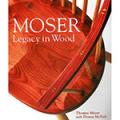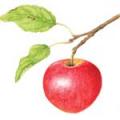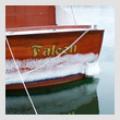Welcome to Blue Hill
The Town, the Bay, the Mountain
“And this, our life, exempt from public haunts, finds tongues in trees, books in the running brooks, sermons in stones, and good in everything.”
—William Shakespeare
Dear Friends:
In the fields, the dandelions have gone by and the orange and yellow hawkweed, buttercups, red and white clover, and ox-eye daisies are coming into bloom. In the woods, the wild viburnum, sometimes called high-bush cranberry, is blooming with rosettes of white flowers, as are the ornamental viburnums, shrubs with berries that attract and feed many birds during the winter. On the margins of the woods, look for beautiful, exotic columbine (Aqualegia spp) with a drooping blossom of pink or peach or purple looking like five little elf hats together. Quite breathtaking.
Field and forest report, June

It takes a sharp eye to tell one grass from another. Grasses are wind-pollinated and so do not need to attract bees with bright colors and sweet smells; so their flowers are mostly shades of green. It is the shapes of their flowers and seed heads that distinguish grasses from each other: some are round like Timothy and foxtail; some tall and straight like orchard grass and beach grass; some drooping like rye and oat grass. For a field guide to the grasses, I have looked far and wide and found nothing to match The Plants of Acadia National Park by Mittlehauser, Gregory, Rooney, and Weber, which has a full section on grasses, reeds, and sedges. They are humble, but they are mighty.
Scrape bare a patch of earth, scorch it, burn it, poison it, and what will be the first life to return to it? The grass. The grass will creep in and bring back to life all that is barren.
Natural events
 The young of many creatures now venture forth to view our ageless world with fresh eyes. This year’s brood of gray squirrels in the hollow of the old pickling pear tree in the dooryard are quick and curious, looking at everything with amazement as though for the first time. Round and round the trunk they chase each other, then down toward the ground where they stop and look before leaving the safety of their bower to venture across the grass. Their mother looks a good deal more worn and weary than they, needing a long vacation, which is unlikely yet as she may well bring forth another brood before summer is gone.
The young of many creatures now venture forth to view our ageless world with fresh eyes. This year’s brood of gray squirrels in the hollow of the old pickling pear tree in the dooryard are quick and curious, looking at everything with amazement as though for the first time. Round and round the trunk they chase each other, then down toward the ground where they stop and look before leaving the safety of their bower to venture across the grass. Their mother looks a good deal more worn and weary than they, needing a long vacation, which is unlikely yet as she may well bring forth another brood before summer is gone.
Soft translucent new leaves harden into opaque green against the blue June skies as they begin their real work of creating food for all living creatures from nothing more than water, soil, sun, and chlorophyll. The miracle of photo-
synthesis is the manufactory of all life.
Good News Department
According to the US Department of Agriculture’s 2012 farming census, Maine is one of the few states where the number of new farmers is actually increasing, as are the number of farms and the value of agricultural products. Most of these farms are smaller and more sustainable. Most significant is that the number of Maine farmers under age 35 increased by 40% between 2007 and 2012.
Rank opinion
As Maine goes, so goes the nation. Look for increasing numbers of young farmers nationwide, and maybe worldwide, as good jobs for the middle class continue to dwindle and youth look for ways to change the world and get back to the basics.
Natural events, late June
Now that their time of frenzied florid fertilization is over, the trees and the early wildflowers have settled down to the task of nourishing their seeds for seasons to come. Once the flowers have faded and fallen, their seeds continue to grow, fed by the parent plant and protected by burr, husk, or shell until it is time for them to flourish too.
The varieties of these seeds and their strategies for dispersal are marvelous. Seeds of dandelions lift off on the slightest breeze and sail for miles, or just across to the neighbor’s lawn. Seeds of maples are torn from the trees on a windy day and whirligig their way to a landing place. Lupine seeds ripen in their pea-like pods until a hot day in August when the pods explode, flinging the seeds far and wide. Apple trees swell the sweet flesh of their fruit around mahogany seeds until at last the fruit falls to become food for the deer, which in turn spread these seeds. Acorns grow slowly until they drop to be gathered by squirrels and blue jays who stash them far and wide, planting the forests of tomorrow.
Plants and animals all seem to be doing the same: giving themselves for coming generations. This is their unspoken purpose, to sprout, to grow, to flourish, and then to fade, leaving behind healthy seeds and soft soil made from their fallen bodies in which their seeds can flourish in turn.
Dog Days, July
According to the venerable Old Farmer’s Almanac, the Dog Days of summer extend from the first week of July to the second week of August. Around here they could just as well be called the Fog Days. They are the hot and muggy days we endure in the interval between the sterling and crystal days of late spring and the buff and brown days of late summer, when clearer skies and cooler nights prevail.
The Dog Days were named in ancient times for the rising of Sirius, the Dog Star. Aristotle refers to them in his Physics and the Romans called them Caniculares Dies or the “days of the little dogs.” Even the Book of Common Prayer of 1552 declares that the “Dog Daies” begin July 6 and end August 17, but perhaps this is only for Anglicans. Still, better hot weather or cold weather than no weather. I figure these sultry days are to redress the bone-chilling cold of late January and February, and finally get our body temperatures back up to 98.6˚ F. The sweltering Dog Days are as tough on dogs as they are on us. Our four-legged friends pant and huff and slurp down gallons of water, then retire to some shady place hoping for a tiny breeze, not even jumping up to chase a teasing squirrel.
Field and forest report
 The blueberry harvest is getting under way on the vast and lonely barrens of Washington and Hancock counties. With it comes the incomparable sweet taste of fresh blueberries. The fields are now dominated by Queen Anne’s lace and black-eyed Susan. The Dog Days could also be called the Cricket Days as these charming chanters enter their glistening adult stage and sing endless love songs to each other, reminding us that summer is far from over and there is still plenty of time for splendor in the grass. Yellow-banded grasshoppers click-clack back and forth in front of us as we amble and saunter through the fields.
The blueberry harvest is getting under way on the vast and lonely barrens of Washington and Hancock counties. With it comes the incomparable sweet taste of fresh blueberries. The fields are now dominated by Queen Anne’s lace and black-eyed Susan. The Dog Days could also be called the Cricket Days as these charming chanters enter their glistening adult stage and sing endless love songs to each other, reminding us that summer is far from over and there is still plenty of time for splendor in the grass. Yellow-banded grasshoppers click-clack back and forth in front of us as we amble and saunter through the fields.
Rank opinion
In Aesop’s ancient fable about the grasshopper and the ant, the grasshopper is subjected to some seriously negative spin. It is true that the ants stay ever-so-busy preparing their colonies for winter, but the grasshoppers are decidedly not lazily fiddling away the summer. When they reach maturity, grasshoppers will lay numerous eggs stocked with enough rich proteins produced by their summer labors to preserve those eggs through the cold winter after the mother unselfishly dies from the cold. In the spring, her eggs hatch out young hopper nymphs, orphaned before their birth. Besides, some ants can give you a nasty bite or burrow into your woodwork; and they are such puritanical busybodies anyway, don’t you think?
In any event, we humans could take a lesson from both the grasshopper and the ant when it comes to providing for the health and security of coming generations.
Seedpods to carry around with you
From Wendell Berry: The soil is the great connector of lives, the source and destination of it all. It is the healer and restorer and resurrector, by which disease passes into health, age into youth, death into life. Without proper care for it we can have no community, because without proper care for it we can have no life.
From the prophet Isaiah [40:6-7]: “All flesh is grass and all its beauty is like the flower of the field. The grass withers, the flower fades, when the breath of the Lord blows upon it. Surely the people are grass.”
And from Carl Sandburg: “The fog comes on little cat feet. It sits looking over harbor and city on quiet haunches and then moves on.”
That’s the almanack for this time. But don’t take it from us—we’re no experts. Go out and see for yourself.
Yr. mst. Hmble & obd’nt servant,
Rob McCall
Rob McCall lives way down east on Moose Island. This almanack is excerpted from his weekly radio show, which can be heard on WERU FM (89.9 in Blue Hill, 99.9 in Bangor) and streamed live via www.weru.org. His latest book, Great Speckled Bird: Confessions of a Village Preacher, is available through your local bookstore. To receive a weekly Almanack installment via email, contact Rob at:
awanadjoalmanack@gmail.com.
Related Articles
Share this article:
2023 Maine Boat & Home Show

Join Us for the Maine Boat & Home Show!
Art, Artisans, Food, Fun & Boats, Boats, Boats
August 11 - 13, 2023 | On the waterfront, Rockland, Maine
Click here to pre-order your tickets.
Show is produced by Maine Boats, Homes & Harbors magazine.















